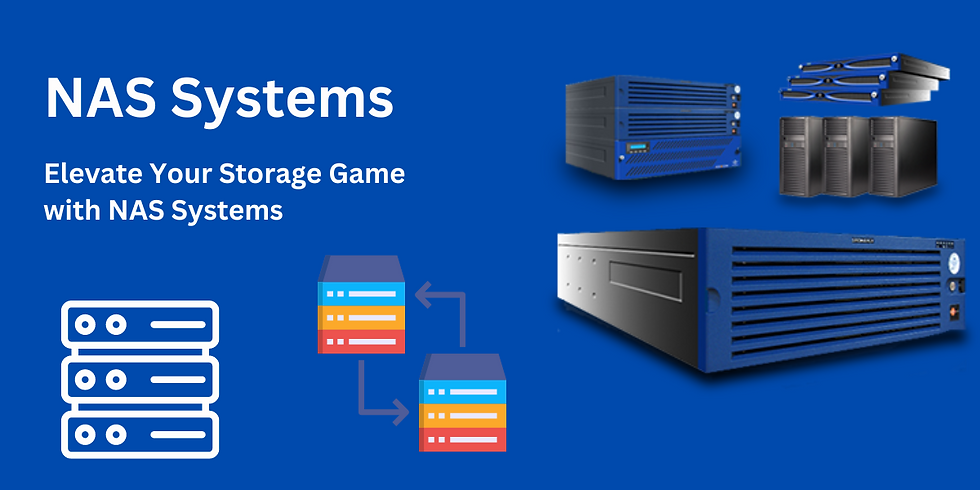How to Secure Your NAS System?
- Scale out nas
- Jun 15, 2023
- 2 min read
With the increasing prevalence of cybercrime, it is imperative to protect sensitive data stored on our network-attached storage (NAS) systems. While NAS systems offer convenient storage solutions, they require a robust security approach to prevent unauthorized access to confidential information. This guide aims to provide practical tips on how to secure your NAS system.
Choose a Robust Password and Usernames
Weak usernames and passwords are among the most common ways that hackers gain access to NAS systems. To avoid this, ensure that you use complex user credentials. Ensure that your password is not easy to guess by using a combination of special characters, symbols, numbers and letters. Also, Change your passwords regularly to prevent unauthorized access to your NAS system.

Keep Your NAS System’s Software Updated
Like all software, your NAS firmware must be updated regularly to keep it secure. Manufacturers release updates to address security vulnerabilities and enhance the system's security. Failing to install firmware updates can leave your system vulnerabilities to attacks. Ensure that you enable automated software updates to keep your system up-to-date.
Enable Two-Factor Authentication
Two-factor authentication (2FA) adds an additional layer of security to your NAS system. With 2FA, an additional log-in step is added after entering your username and password on the NAS system. This ensures that only authorized users can access the NAS system. For the best security practice, use 2FA, especially when remote access is required.
Limit Access to the NAS
Limiting access to your NAS system prevents unauthorized access. Only allow users who require access to the system. Use permissions and access controls of your NAS system to allow only those users who require access. This ensures only authorized users can access confidential data stored on your system.
Use a VPN for Remote Access
Remote access to data is a standard requirement for many organizations. When remote access is required, use Virtual Private Networking (VPN) to ensure that data transmitted between local and remote systems is secure. VPN encrypts data between the remote user and the NAS Solutions device, reducing the risk of unauthorized access.
Use Firewall Protection
Using firewall protection is another way to keep your NAS system safe. A firewall can block unauthorized access to your network by monitoring incoming and outgoing traffic. Make sure you enable the built-in firewall on your NAS system or consider using a third-party firewall.
Backup Your Data
One of the most important things you can do to protect your data is to back it up. In case of a ransomware attack or other data breach, having a backup can be a lifesaver. Make sure you regularly backup your data to an external hard drive or cloud storage.
Conclusion
Securing your NAS system is essential in this age of cybersecurity threats. Cybersecurity thieves are becoming increasingly sophisticated, and it's vital to keep up with the latest security practices to keep your data safe. In this guide, we have outlined some of the practical steps you can take to secure your NAS system. By following these tips, you can protect your sensitive data from unauthorized access and maintain the integrity of your NAS system. To know more about securing NAS systems, contact us.



Comments